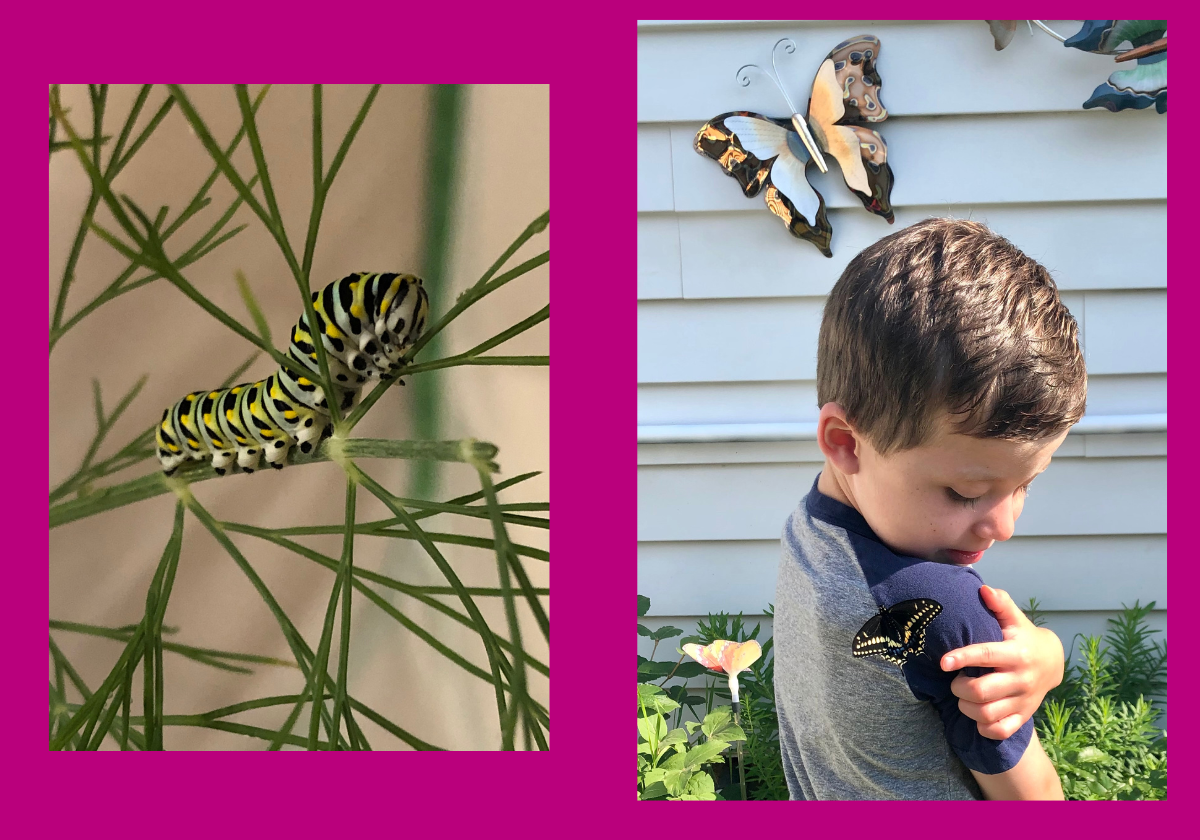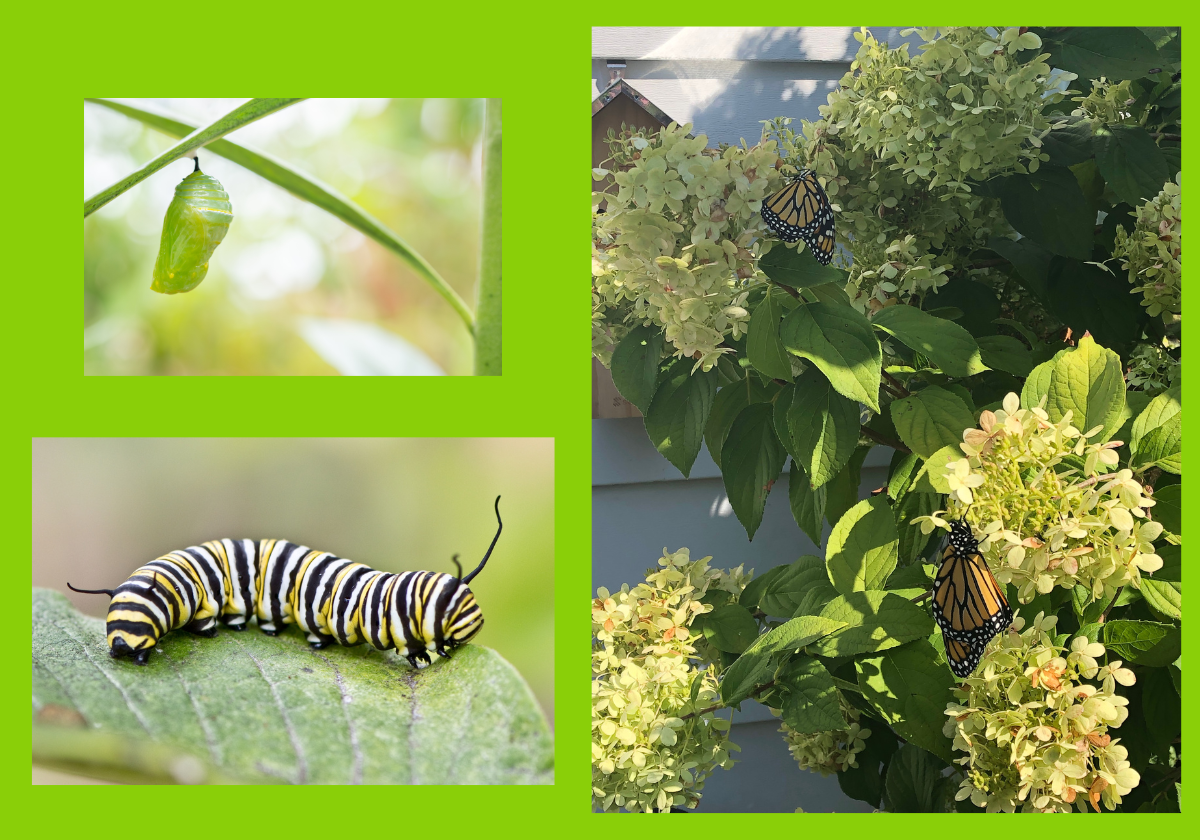At our house, summertime is the most anticipated season. We cannot help but look forward to enjoying our pollinator garden and waiting to witness the most magical transformation of all- the metamorphosis of a butterfly from an egg to a beautiful winged-creature! With just a few native plants in our garden and a small butterfly net, we get to watch the miracle before our very own eyes.
Our focus is usually on Swallowtail and Monarch butterflies. We have learned so much about these two species! It is so fun watching Tyler become an expert on every stage of their life cycle. From the egg to the caterpillar to the chrysalis and finally the emergence of a colorful butterfly, we cannot get enough of the beauty and grace of these insects.
Our garden has become a haven for butterflies, with a variety of plants that not only provide nourishment for the adults but also serve as caterpillar food. To turn your garden into a little butterfly sanctuary, you need the proper host plants for your butterflies. We offer host plants for the Common Black Swallowtail, Giant Swallowtail and Monarchs.
HOST PLANTS
Common Swallowtail: Rue Dill Parsley Fennel Carrots Golden Alexander Fun Fact: Male Swallowtails tend to be smaller than females and have more yellow on their wings. Females tend to have more blue. The one pictured below is a male. Giant Swallowtail: Rue Citrus Lime Prickly Ash Hop tree wild lime ** Giant Swallowtails can be difficult to establish in your Ohio garden, but be patient. If you plant Common Rue, they will come! Their eggs are orange unlike the common Swallowtail, which are yellow.  Monarch: Milkweed Fun Fact: Male Monarch's have 2 black circles/ dots in the middle of their wings. Females do not |
Bringing the caterpillars indoors and nurturing them in a butterfly net is a wonderful way to observe the life cycle of these fascinating creatures. We always make an effort to bring ALL of our Monarch caterpillars inside to help build up the dwindling population! We like to use disposable cups with lids to hold water and provide fresh rue, dill or milkweed clippings, depending on which species we are feeding. You can also use potting soil for your clippings. When you notice the caterpillars adopting that "J' shape, it signals the exciting soon-to-be transformation into a chrysalis. Wait patiently during those few weeks can certainly be a lesson in anticipation as you await their emergence as beautiful butterflies!
Once their wings have dried and strengthened after a few hours, we gently take them outside to enjoy the rest of our pollinator garden. It is a rewarding experience! Not only do you get to marvel at your butterflies, but you also give back to the ecosystem of your garden. It is truly a delightful and educational adventure that brings joy and appreciation to the incredible world of butterflies!
Do you need some inspiration for native nectar plants to add to your pollinator garden? We've got you covered. Consider adding some of the following plants/ flowers to your garden.
Salvia
Cone flowers
Lavender
Zinnias
Butterfly Bush
Butterfly Weed
Cosmos
Bee Balm
Sedum
Aster


